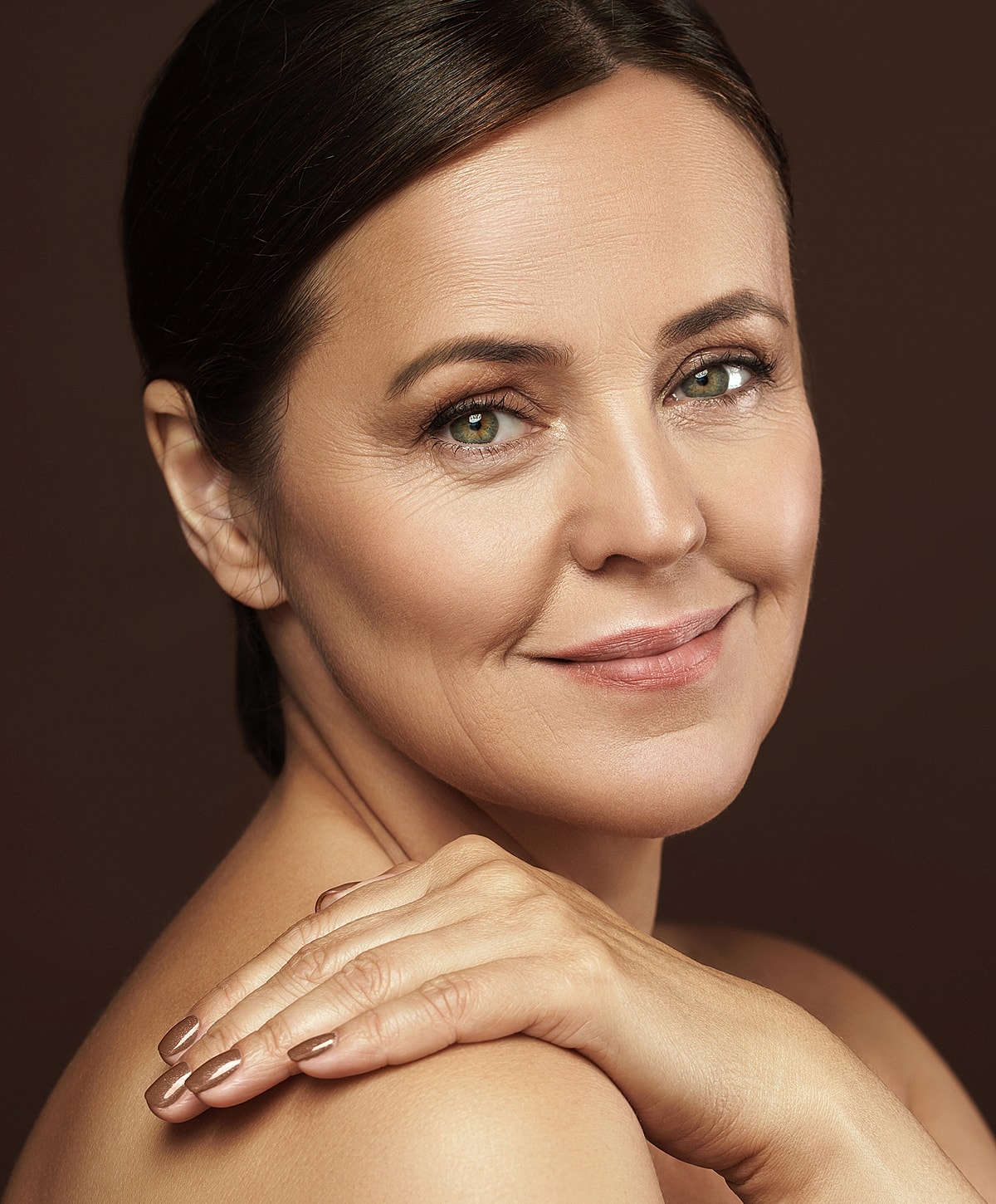
Deep Plane Facelift
A deep plane facelift lifts deeper facial tissues for longer-lasting, more natural rejuvenation of the cheeks, jawline, and neck.


A deep plane facelift lifts deeper facial tissues for longer-lasting, more natural rejuvenation of the cheeks, jawline, and neck.

Some changes in the face, such as sagging cheeks, deep folds, and loose jowls, require more than surface-level correction.
A traditional facelift repositions the skin and upper layers of the face. However, for results that last longer and look natural in motion, a deep plane facelift takes it a step further. It lifts the deeper facial tissues, releasing and repositioning the structures responsible for midface descent and laxity.
At Redbud Facial Plastic Surgery in Oklahoma City, Dr. Nicholas Clark brings elite fellowship training and a focused career in facial plastic surgery to this advanced facelift technique. As an aging face specialist, he uses the deep plane facelift to restore youthful contours in a way that avoids tension, prevents a pulled look, and lasts for years. If you’re seeking subtle but powerful rejuvenation, this technique may be the right fit.

Elevates the midface and jawline by repositioning deeper structures

Results move naturally with your facial expressions

Skin is gently redraped without being pulled tight

Typically maintains results longer than a traditional facelift

Ideal for patients seeking a refined, high-level result

A deep plane facelift is a specialized form of facial rejuvenation surgery that repositions the tissues beneath the superficial musculoaponeurotic system (SMAS). Unlike a traditional facelift, which focuses more on the skin and SMAS, the deep plane approach releases and lifts the ligaments and deeper structures that cause midface sagging, nasolabial folds, and jowls.
This technique targets the actual descent of facial support layers, especially in the cheeks and jawline, rather than simply tightening the surface. It’s often preferred for patients in their 50s to 70s who want a comprehensive yet natural-looking improvement that holds up beautifully over time.
The procedure is performed under general anesthesia in a private, accredited surgical setting. Dr. Clark makes careful incisions along natural skin creases near the ears and hairline. He then gently elevates the deeper facial tissues, releasing tethered ligaments and lifting the mid face, jowls, and neck contours in a single motion.
Lifting the tissues beneath the SMAS minimizes tension on the skin, resulting in more lasting results. Dr. Clark’s deep knowledge of facial structures, facial nerves, and aging patterns ensures that the procedure is both safe and effective.

The deep plane facelift treats many of the same signs of aging as a traditional approach, but with enhanced lifting of the cheeks, correction of deep nasolabial folds, and more natural recontouring of the jawline and neck. It’s particularly effective for individuals with significant midface volume loss, sagging skin, or a hollowed look beneath the eyes.
This technique also addresses excess skin, repositions facial fat, and softens the separation between the lower eyelids and the cheeks. When paired with complementary procedures, such as a neck lift or eyelid surgery, the result is a full yet seamless facial rejuvenation.
The results of a deep plane facelift tend to be longer-lasting—often 10 to 15 years—and can look softer and more dynamic than surface lifts. Because the underlying tissues are repositioned rather than tightened, the look is both refined and resilient.
Patients notice lifted cheeks, improved jawline definition, and a smoother transition between the face and neck. And because the skin is not under strain, the final result looks relaxed, not surgical. The procedure also improves the way the face moves, preserving its natural expressiveness.

Candidates for a deep plane facelift are often patients in their 50s, 60s, or 70s who have experienced noticeable changes in their midface, jawline, and neck that cannot be corrected with fillers or less invasive techniques. Ideal patients have reasonably good skin elasticity, are in good overall health, and have realistic expectations for their results.
This procedure is especially well-suited for patients who want more than a surface correction and prefer a long-lasting solution to facial aging. Dr. Clark will evaluate your facial structure, skin quality, and medical history to determine if this surgical technique is right for you.

Recovery from a deep plane facelift is similar to that of other facelift surgeries, with most patients returning to normal activities within two weeks.
Swelling and bruising peak around day 3–5 and then begin to fade. We provide detailed aftercare guidance to help minimize swelling, support healing, and achieve the optimal outcome.
Dr. Clark maintains close contact with each patient during the recovery process, ensuring a smooth and reassuring post-op experience. While some residual swelling may persist for several weeks, you’ll look presentable much sooner. Final results continue to refine over several months as all swelling fades and the tissues settle into place.
Patients who undergo a deep plane facelift often describe the result as a “refreshed version” of themselves—elevated, refined, and timeless. The cheeks regain fullness, the jawline appears cleaner, and the neck looks tighter and more youthful. Most importantly, your face looks like it belongs to you—not like you had cosmetic surgery.
These facelift results tend to outlast those of a traditional facelift, especially in the midface, where volume loss and descent are hardest to treat with skin-tightening alone. With proper care and sun protection, you can enjoy your results for over a decade.

Dr. Nicholas Clark is one of the few facial plastic surgeons in Oklahoma City with advanced fellowship training specifically in aging face surgery. He has devoted his career to facial rejuvenation, and the deep plane facelift is one of his most trusted tools.
Patients choose Dr. Clark not just for his credentials but for his personal approach. He takes the time to understand your goals, evaluates your facial anatomy with care, and guides you with honesty. The result is a tailored experience—quietly luxurious and meticulously refined—from consultation to final result.
This depends on your anatomy and goals. A deep plane facelift offers more robust lifting in the cheeks and midface, especially for those with more advanced facial aging. Dr. Clark can help determine which approach fits your needs.
Yes. One of the biggest advantages of this technique is that it restores a natural, soft look without signs of tightness or pulling. A deep plane facelift also helps preserve natural facial movement.
Many patients maintain their results for 10 to 15 years. This longevity is due to the deeper lifting of the underlying tissues, which better resists the pull of gravity over time.
While all facial surgeries carry some risk, Dr. Clark’s training in head and neck surgery and experience with facial nerve anatomy significantly reduce this risk. He takes every precaution to protect nerve function.
Yes, and it often is. Pairing a deep plane facelift with a neck lift provides comprehensive improvement to the face and neck, ensuring a seamless and balanced rejuvenation of the entire area.
There may be slightly more swelling than after a traditional facelift initially due to the deeper work. However, it tends to resolve similarly to other facelift procedures, especially with attentive aftercare and protocols to minimize swelling.
Most candidates are in their 50s or 60s, but some patients in their 40s with significant facial aging or genetic predisposition may benefit. The decision is based on anatomy, not just age.
No. This is an outpatient procedure in most cases, and patients return home the same day with a designated caregiver.
Schedule a private consultation with Dr. Clark. He will evaluate your goals, perform a facial analysis, and help you decide if a deep plane facelift is right for you.